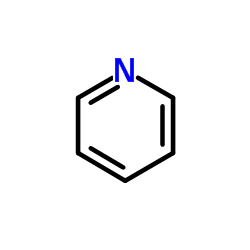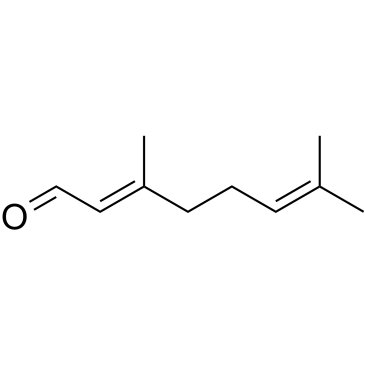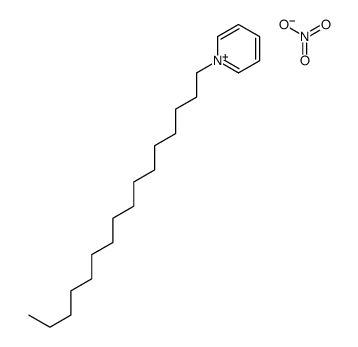123-03-5
| Name | cetylpyridinium chloride |
|---|---|
| Synonyms |
Pyrisept
1-HEXADECYL-PYRIDINIUM,CHLORIDE Pristacin MFCD00011731 EINECS 204-593-9 Cetafilm Medilave Pyridinium, 1-hexadecyl-, chloride (1:1) cetylpyridinium chloride Aktivex cpc Ceepryn chloride Pionin B 651P 1-hexadecylpyridinum chloride Cetamium Ceepryn Biosept N-hexadecylpyridinium chloride Cetyl-pyridinium chloride Merothol Merocet Dobendan hexadecylpyridinium chloride 1-Hexadecylpyridinium chloride Cloruro di cetilpiridinio tserigel Ipanol 1-hexadecylpyridin-1-ium,chloride Newkalgen B 651P N-cetyl-pyridinium chloride |
| Description | Cetylpyridinium chloride, a cationic quaternary ammonium compound, is an anti-bacterial agent with broad-spectrum activity. Cetylpyridinium chloride is an effective anti-HBV capsid assembly inhibitor with an IC50 of 2.5 μM. Cetylpyridinium chloride is used in pesticides and various types of mouthwashes, and other personal care products[1][2]. |
|---|---|
| Related Catalog | |
| Target |
IC50: 2.5 μM (HBV capsid assembly)[1] |
| In Vitro | Cetylpyridinium chloride interacts with dimeric viral nucleocapsid protein (known as core protein or HBcAg) specifically. Compared with other HBV inhibitors, Cetylpyridinium chloride achieves significantly better reduction of HBV particle number in HepG2.2.15 cell line. Cetylpyridinium chloride inhibits capsid assembly and leads to reduced HBV biogenesis[1]. Cetylpyridinium chloride is a safe antimicrobial agent with broad-spectrum activity for preventing biofilm formation and gingivitis[2]. |
| In Vivo | Cetylpyridinium chloride (30 μg/kg; intramuscular injection; daily; for 3 days; male C57BL/6 mice) treatment inhibits HBV replication in mouse hydrodynamic model system[1]. Animal Model: Male C57BL/6 mice (6-week old) injected with the plasmid [1] Dosage: 272 μg/kg/day Administration: Intramuscular injection; daily; for 3 days Result: Suppressed serum HBV DNA levels, decreased by 60% in day2 and 45% in day3 compared to the control. |
| References |
| Melting Point | 77°C |
|---|---|
| Molecular Formula | C21H38ClN |
| Molecular Weight | 339.986 |
| Exact Mass | 339.269287 |
| PSA | 3.88000 |
| LogP | 3.45940 |
| Stability | Stable. Combustible. Incompatible with strong oxidizing agents, strong bases. |
Synonym:1-Hexadecylpyridinium chloride; CPC Section 2 - COMPOSITION, INFORMATION ON INGREDIENTS
Risk Phrases: 25 26 36/37/38 50/53 Section 3 - HAZARDS IDENTIFICATION EMERGENCY OVERVIEW
Toxic if swallowed. Very toxic by inhalation. Irritating to eyes, respiratory system and skin. Very toxic to aquatic organisms, may cause long-term adverse effects in the aquatic environment. Potential Health Effects Eye: Contact with eyes may cause severe irritation, and possible eye burns. Skin: Causes skin irritation. May be harmful if absorbed through the skin. Ingestion: Harmful if swallowed. May cause irritation of the digestive tract. Inhalation: May be fatal if inhaled. Dust is irritating to the respiratory tract. Chronic: No information found. Section 4 - FIRST AID MEASURES Eyes: In case of contact, immediately flush eyes with plenty of water for at least 15 minutes. Get medical aid immediately. Skin: In case of contact, immediately flush skin with plenty of water. Remove contaminated clothing and shoes. Get medical aid. Wash clothing before reuse. Ingestion: If swallowed, do not induce vomiting unless directed to do so by medical personnel. Never give anything by mouth to an unconscious person. Get medical aid. Inhalation: POISON material. If inhaled, get medical aid immediately. Remove victim to fresh air. If not breathing, give artificial respiration. If breathing is difficult, give oxygen. Notes to Physician: Section 5 - FIRE FIGHTING MEASURES General Information: As in any fire, wear a self-contained breathing apparatus in pressure-demand, MSHA/NIOSH (approved or equivalent), and full protective gear. During a fire, irritating and highly toxic gases may be generated by thermal decomposition or combustion. This material in sufficient quantity and reduced particle size is capable of creating a dust explosion. Runoff from fire control or dilution water may cause pollution. Extinguishing Media: Use water spray, dry chemical, carbon dioxide, or appropriate foam. Section 6 - ACCIDENTAL RELEASE MEASURES General Information: Use proper personal protective equipment as indicated in Section 8. Spills/Leaks: Vacuum or sweep up material and place into a suitable disposal container. Avoid runoff into storm sewers and ditches which lead to waterways. Clean up spills immediately, observing precautions in the Protective Equipment section. Avoid generating dusty conditions. Provide ventilation. Evacuate unnecessary personnel. Approach spill from upwind. Section 7 - HANDLING and STORAGE Handling: Wash thoroughly after handling. Remove contaminated clothing and wash before reuse. Do not get in eyes, on skin, or on clothing. Keep container tightly closed. Do not breathe dust. Do not breathe spray or mist. Use only with adequate ventilation or respiratory protection. Storage: Keep container closed when not in use. Store in a tightly closed container. Store in a cool, dry, well-ventilated area away from incompatible substances. Section 8 - EXPOSURE CONTROLS, PERSONAL PROTECTION Engineering Controls: Facilities storing or utilizing this material should be equipped with an eyewash facility and a safety shower. Use adequate ventilation to keep airborne concentrations low. Exposure Limits CAS# 123-03-5: Personal Protective Equipment Eyes: Wear appropriate protective eyeglasses or chemical safety goggles as described by OSHA's eye and face protection regulations in 29 CFR 1910.133 or European Standard EN166. Skin: Wear appropriate protective gloves to prevent skin exposure. Clothing: Wear appropriate protective clothing to prevent skin exposure. Respirators: A respiratory protection program that meets OSHA's 29 CFR 1910.134 and ANSI Z88.2 requirements or European Standard EN 149 must be followed whenever workplace conditions warrant respirator use. Section 9 - PHYSICAL AND CHEMICAL PROPERTIES Physical State: Powder Color: white Odor: characteristic odor pH: 5.2 (10g/l H2O) Vapor Pressure: Not available. Viscosity: Not available. Boiling Point: Not available. Freezing/Melting Point: 77 deg C Autoignition Temperature: Not available. Flash Point: Not available. Explosion Limits, lower: Not available. Explosion Limits, upper: Not available. Decomposition Temperature: 234 deg C Solubility in water: Soluble. Specific Gravity/Density: Molecular Formula: C21H38ClN Molecular Weight: 339.98 Section 10 - STABILITY AND REACTIVITY Chemical Stability: Stable under normal temperatures and pressures. Conditions to Avoid: Dust generation, confined spaces. Incompatibilities with Other Materials: Strong oxidizing agents. Hazardous Decomposition Products: Hydrogen chloride, nitrogen oxides, carbon monoxide, carbon dioxide. Hazardous Polymerization: Has not been reported Section 11 - TOXICOLOGICAL INFORMATION RTECS#: CAS# 123-03-5: UU4900000 LD50/LC50: CAS# 123-03-5: Draize test, rabbit, eye: 1%; Draize test, rabbit, eye: 100 mg; Draize test, rabbit, skin: 50 mg/24H Moderate; Inhalation, rat: LC50 = 90 mg/m3/4H; Oral, mouse: LD50 = 108 mg/kg; Oral, rabbit: LD50 = 400 mg/kg; Oral, rat: LD50 = 200 mg/kg. Sensitization test (guinea pig): negative. Carcinogenicity: Pyridinium, 1-hexadecyl-, chloride - Not listed by ACGIH, IARC, or NTP. Other: See actual entry in RTECS for complete information. Section 12 - ECOLOGICAL INFORMATION Ecotoxicity: Fish: Carp: 0.01 mg/l; 96 h; LC50 Section 13 - DISPOSAL CONSIDERATIONS Dispose of in a manner consistent with federal, state, and local regulations. Section 14 - TRANSPORT INFORMATION IATA Shipping Name: Toxic Solid, Organic, N.O.S. Hazard Class: 6.1 UN Number: 2811 Packing Group: I IMO Shipping Name: Toxic Solid, Organic, N.O.S. Hazard Class: 6.1 UN Number: 2811 Packing Group: I RID/ADR Shipping Name: Toxic Solid, Organic, N.O.S. Hazard Class: 6.1 UN Number: 2811 Packing group: I Section 15 - REGULATORY INFORMATION European/International Regulations European Labeling in Accordance with EC Directives Hazard Symbols: T+ N Risk Phrases: R 25 Toxic if swallowed. R 26 Very toxic by inhalation. R 36/37/38 Irritating to eyes, respiratory system and skin. R 50/53 Very toxic to aquatic organisms, may cause long-term adverse effects in the aquatic environment. Safety Phrases: S 26 In case of contact with eyes, rinse immediately with plenty of water and seek medical advice. S 28A After contact with skin, wash immediately with plenty of water. S 36/37 Wear suitable protective clothing and gloves. S 45 In case of accident or if you feel unwell, seek medical advice immediately (show the label where possible). S 61 Avoid release to the environment. Refer to special instructions/safety data sheets. WGK (Water Danger/Protection) CAS# 123-03-5: 3 Canada CAS# 123-03-5 is listed on Canada's DSL List. CAS# 123-03-5 is not listed on Canada's Ingredient Disclosure List. US FEDERAL TSCA CAS# 123-03-5 is listed on the TSCA inventory. SECTION 16 - ADDITIONAL INFORMATION N/A |
CHEMICAL IDENTIFICATION
HEALTH HAZARD DATAACUTE TOXICITY DATA
|
| Hazard Codes | T+ |
|---|---|
| RIDADR | 2811 |
| Packaging Group | III |
| Hazard Class | 6.1(b) |
| HS Code | 2933399090 |
|
~% 
123-03-5 |
| Literature: Journal of the Chemical Society, , p. 682 Helvetica Chimica Acta, , vol. 21, p. 223,230 |
|
~% 
123-03-5 |
| Literature: Synlett, , # 12 p. 1687 - 1692 |
| Precursor 3 | |
|---|---|
| DownStream 4 | |
| HS Code | 2933399090 |
|---|---|
| Summary | 2933399090. other compounds containing an unfused pyridine ring (whether or not hydrogenated) in the structure. VAT:17.0%. Tax rebate rate:13.0%. . MFN tariff:6.5%. General tariff:20.0% |





